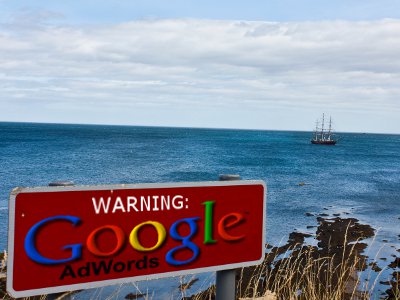Google AdWords: Smooth Sailing or Stormy Seas?

By DatingFactory.us Traffic Team
YNOT – How you start out with Google AdWords can set the scene for smooth sailing or digging yourself out of a hole later down the line. If you’re dipping your toe into the Google AdWords waters, here are a few tips to help you avoid some of the common pitfalls and escape picking up those dreaded “poor” Quality Scores.
Discover your campaigns’ core search terms
One of the most important first tasks is generating a list of core keywords to be used in a campaign. Some should be obvious, but there are a whole host of keywords you won’t have thought of, too. A number of keyword discovery tools exist, but they cost money. To keep your costs down, Google’s Keyword Tool should do everything you need to begin with. The tool is increasingly good at discovering useful search terms that can be added to campaigns.
Access the Keyword Tool under the “Opportunities” tab within your AdWords account. Enter keywords you’d like to use, or enter your web address and Google will crawl your site and make suggestions. Whichever way you go, the Keyword Tool will start suggesting keywords for you to add. For each keyword, the tool will offer data about how competitive the term is, global and local search volumes, and though integration with Google Insights, how the popularity of the search term has trended over time. Remember that Google automatically will add these terms as a broad match.
Another good way to come up with core terms is to see what the competition is up to. Using Google’s Ad Preview Tool (a tool that allows advertisers to check the way their ads will look), search on different terms to see which competitors pop up and at what ad positions. Or try KeywordSpy.co.uk, which will reveal the terms your competitors are using. Unfortunately, it won’t tell you which terms are working really well for them.
Finally, scour the news and talk to friends and family to discover terms people would use to find your services. At the end of this exercise, you should have a pretty exhaustive list of words and phrases you’d like to use. The next stage is to put them into some kind of order.
Group your keywords tightly
Now that you’ve got your keyword list, the next task is to group them intelligently into AdGroups. Good click-through rates (CTRs) will come when the keyword, the ad text and your landing page are tightly themed.
CTRs are a vital ingredient in your eventual Quality Score, so it’s important to get this stage right. Proceed with slowly and carefully. The worst thing you can do is lump a host of questionable or very broad keywords into an AdGroup. You’ll come out of the gate with poor quality scores and spend the next stage digging yourself out of a hole rather than smoothly expanding your campaigns.
So, look at your keywords and organize them into groups that make sense to your potential visitor. And use “broad” carefully. If you think your budget is going to run away from you, or if the terms are just too broad, try phrase matching to start with. As well as protecting your budget, using phrase matches should help protect your initial Quality Scores.
Create targeted ads
We’ll go into tips about writing your ads in subsequent posts, but to start with make sure you follow some simple rules:
- Forget about trying to cram your whole sales pitch into your ad. You only have space for a clearly worded offer plus a) a clear, concise benefit statement and b) a call to action.
- Your ad text should reflect the search term you’re bidding on, particularly in the Ad Title. For example, if you’re bidding on “singles in New York,” that phrase should be reflected in your Ad Title and possibly your destination URL (and on your landing page too, but we’ll get onto that another time).
- Write three variations of your ad (more than three is overkill at this stage), enabling you quickly to weed out the ads that don’t work. Google automatically will present the ad that performs best (if you allow it to), but it’s worth monitoring and adding new ads to test as you weed out the poorer ones.
- Test the display URL. This gives you an opportunity to target your ads even more tightly (e.g., “YourDatingSite.com/Singles_in_New_York”). However, while a targeted URL can give your ad more relevance, users are a bit less predictable. Sometimes targeted display URLs work, and sometimes they don’t, so it’s best to test and stick with what works.
Set up a Brand Campaign
If you’re literally just starting out, your site may not have been indexed by Google yet, or it may not rank highly. This can be a problem, as people coming back to your site won’t be able to find it. Therefore, it’s best to set up a campaign solely with all the variations of your brand name. This will cost you money in the short term, but it will ensure you’re not losing valuable browsers to your competitors.
Monitor from launch
Once you’ve gone live, it’ll take a while for Google to find a level for your new campaign(s), so don’t be too worried if the cost per click is high to begin with. If you’ve followed the steps above and take things slowly, your Quality Score will build over time, thereby bringing your down CPC. Also, check your campaigns regularly to see how your broad and phrase matches are working.
Finally, use the Search Query Reports to weed out terms that are driving you loads of traffic but no sales.

DatingFactory.us gives webmasters the freedom to build their own dating sites on their own domain names, complete with fresh and active profiles from the Dating Factory network. The service is free and allows the creation of mainstream and adult-themed sites, with optional specialty niches. The company’s motto is “We build your brand, not ours.”










